Guandata BI Concept Table
1. Overview
Guandata BI is a modern BI platform based on enterprise digital operations with the core concept of making business users productive. It is also a one-stop modern BI solution for hybrid data analysis needs, composed of a series of product matrix combinations.
This document explains common terminology and unique concepts in high-frequency scenarios according to BI process modules. Through these concept explanations, users can better utilize Guandata BI.
2. Data Integration
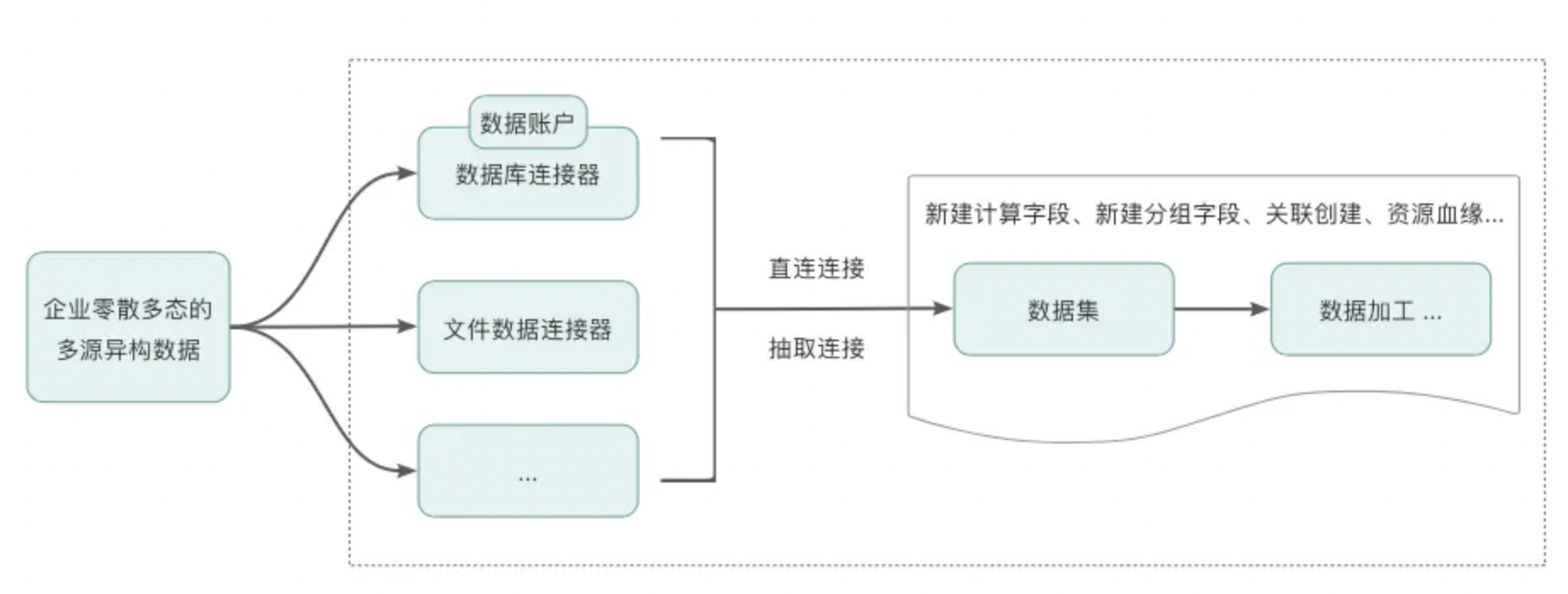
| Term | Definition |
|---|---|
| Data Center | Data Center refers to the management center for data integration, data organization and fusion |
| Data Connector | Data Connector is a bridge used to connect Guandata BI and external data sources, capable of extracting data from source systems and importing it into the Guandata BI platform. Currently, Guandata BI supports providing JDBC, API integration and other methods to connect various forms of data such as files and databases. The connector types include but are not limited to files, databases, Web Service, etc. |
| Data Account | Data Account is a credential used to connect to databases (services). Users need to configure connection information, including database type, host address, port number, and username and password for connection. Its role is to quickly establish database connections, obtain table information from the database, and create datasets |
| Direct Connection & Extraction | Provides two ways to connect data: direct connection and extraction (Guan-Index). Please choose different connection methods according to specific business scenarios. The differences are as follows: |
| New Calculated Field | New Calculated Field refers to creating new business-required calculated fields by changing calculation logic based on existing fields. For example: creating a new gross profit calculation field, Gross Profit = SUM([Sales Amount]) - SUM([Cost Price]) |
| New Grouping Field | New Grouping Field refers to merging the same fields into a group according to conditions, and then performing data analysis according to the grouped data |
| Associated Creation | Used to view whether the current dataset as a parent has participated in creating other BI resources (children), such as ETL, datasets, etc. |
| Resource Lineage | Through data lineage, users can easily see the associations between each data application, analysis dashboard, ETL, dataset, etc. The flow direction of data analysis is fully under control, enabling rapid data governance and other work, understanding resource upstream and downstream dependencies, resource deletion and modification risk assessment, etc. When troubleshooting problems, problems can also be quickly located |
3. Data Preparation
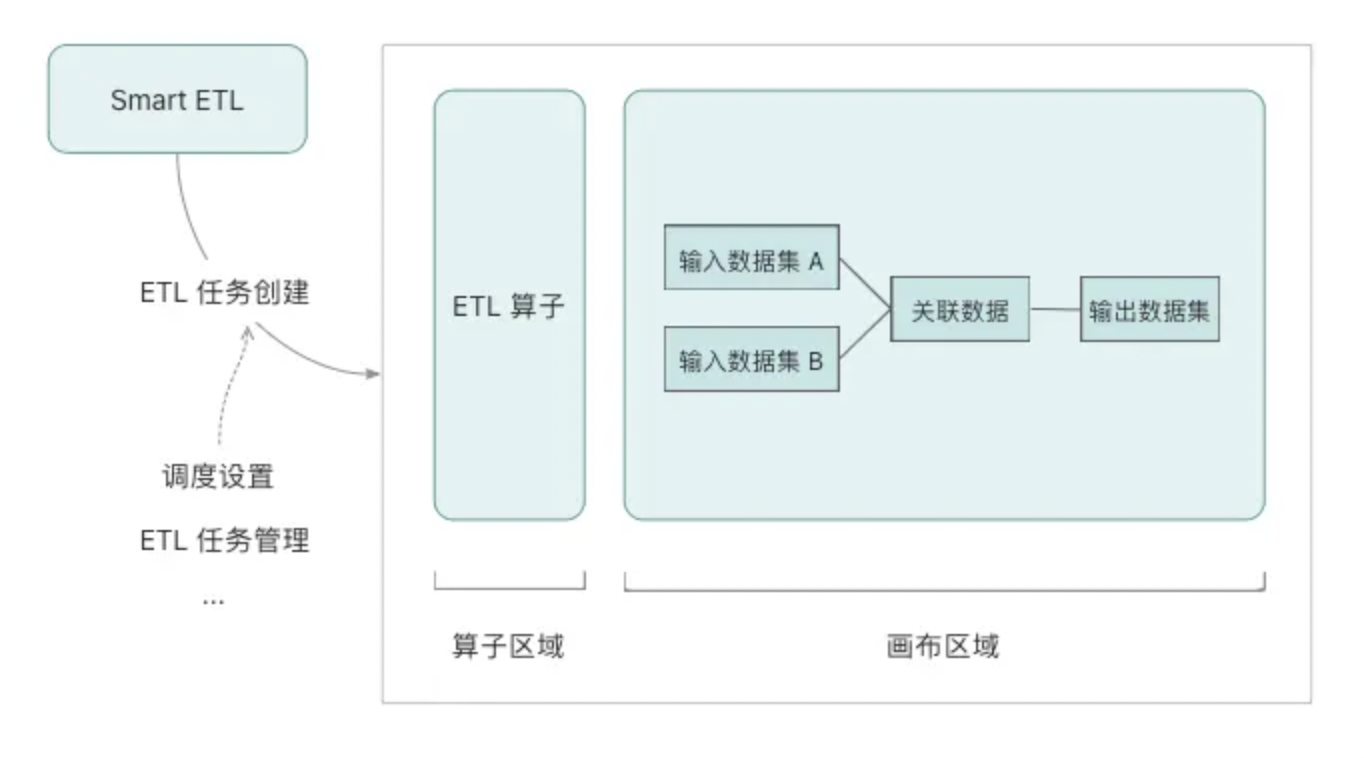
| Term | Definition |
|---|---|
| Smart ETL | Smart ETL is a zero-code, full-drag-and-drop self-service data preparation and data warehouse construction tool provided by Guandata BI for business usability. Based on powerful Smart ETL and nodes, through full drag-and-drop, configurable methods to perform data cleaning, transformation, loading and other operations, real-time preview error correction and output of any node to complete the construction of data processing workflows, helping enterprises/departments complete lightweight data warehouse construction |
| Smart ETL Operators | Guandata BI provides various powerful Smart ETL operators, including 5 major categories and 15+ commonly used operators: input/output, column editing, data editing, data combination, and advanced calculations |
| Canvas | Canvas refers to the Smart ETL workspace, used to create and edit ETL workflows. Users can add Smart ETL operators on the canvas, and can also add/edit annotation notes |
| Associated Data | Associated Data refers to splicing based on the same associated columns in both datasets, including three connection methods: inner join, left outer join, and full join.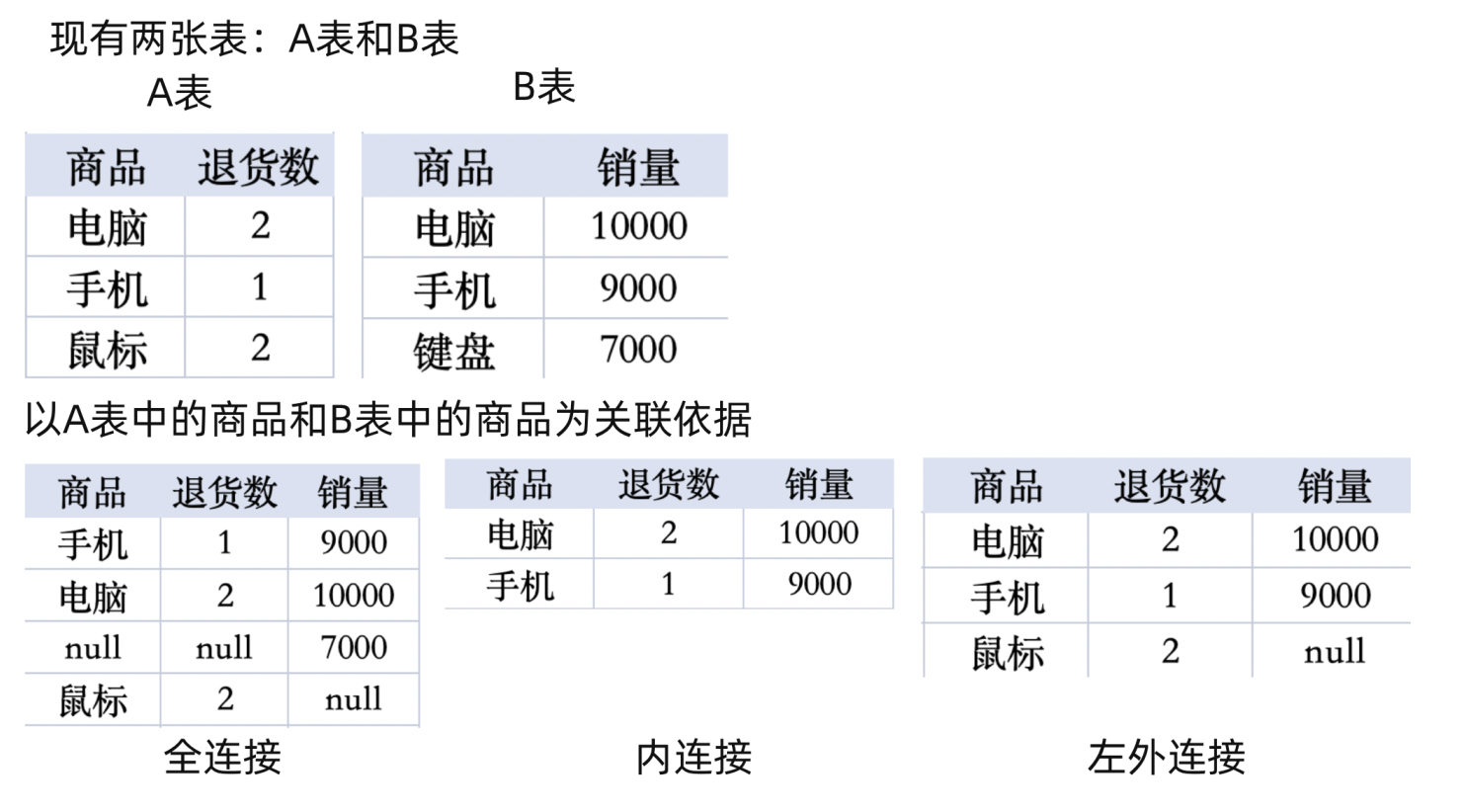 |
4. Reports and Visualization
4.1. Chinese-style Reports Pro
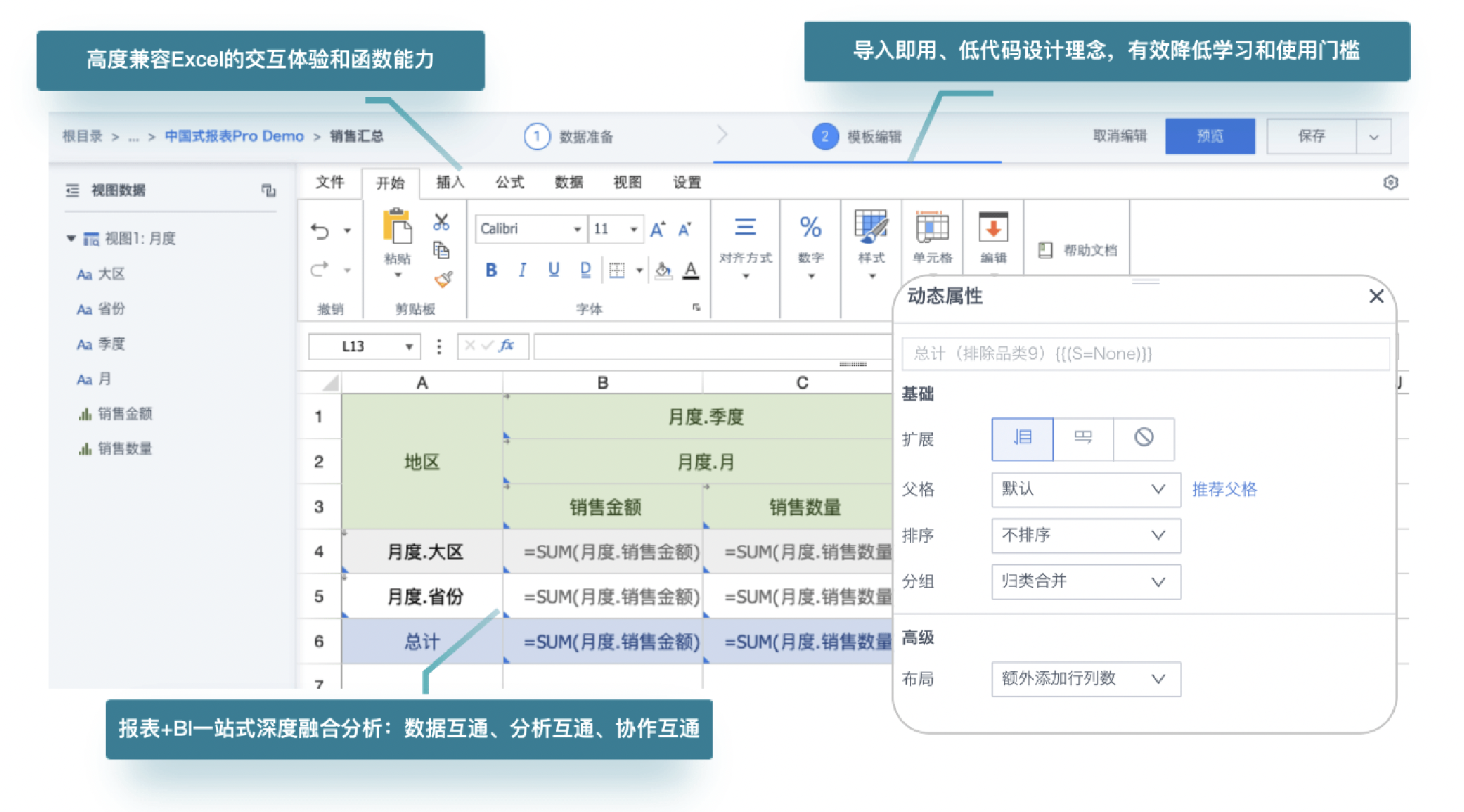
| Term | Definition |
|---|---|
| Chinese-style Reports Pro | Chinese-style Reports is a low-threshold, one-stop complex reporting product provided by Guandata that is "highly compatible with Excel user habits". As long as you can use Excel, you can easily achieve independent development and maintenance of Chinese-style reports. On the other hand, reports also have BI's intelligent data preparation, permission control, chart fusion presentation and linkage drill-down capabilities, with one-stop full-chain capabilities such as data interoperability, analysis interoperability, collaboration interoperability, and subscription, further enhancing business flexibility and usability |
| View | View refers to the dataset, which can be used in the data preparation stage during report creation. When designing reports, data source fields from the view can be dragged into Excel templates |
| Multi-view Association | During the report template editing stage, support associating and calculating multiple data source tables. The association result table is a virtual view (similar to the dataset combination operator in ETL). Both virtual view and source table data can be used for reports |
| Template Cell | Template cells contain template fields and template properties, and are cells that can be expanded according to configured property rules |
| Dynamic Properties | When a cell is a template cell, its template properties can be configured, including basic properties and advanced properties, such as: expansion direction, setting parent grid, sorting, etc. |
4.2. Chart Visualization
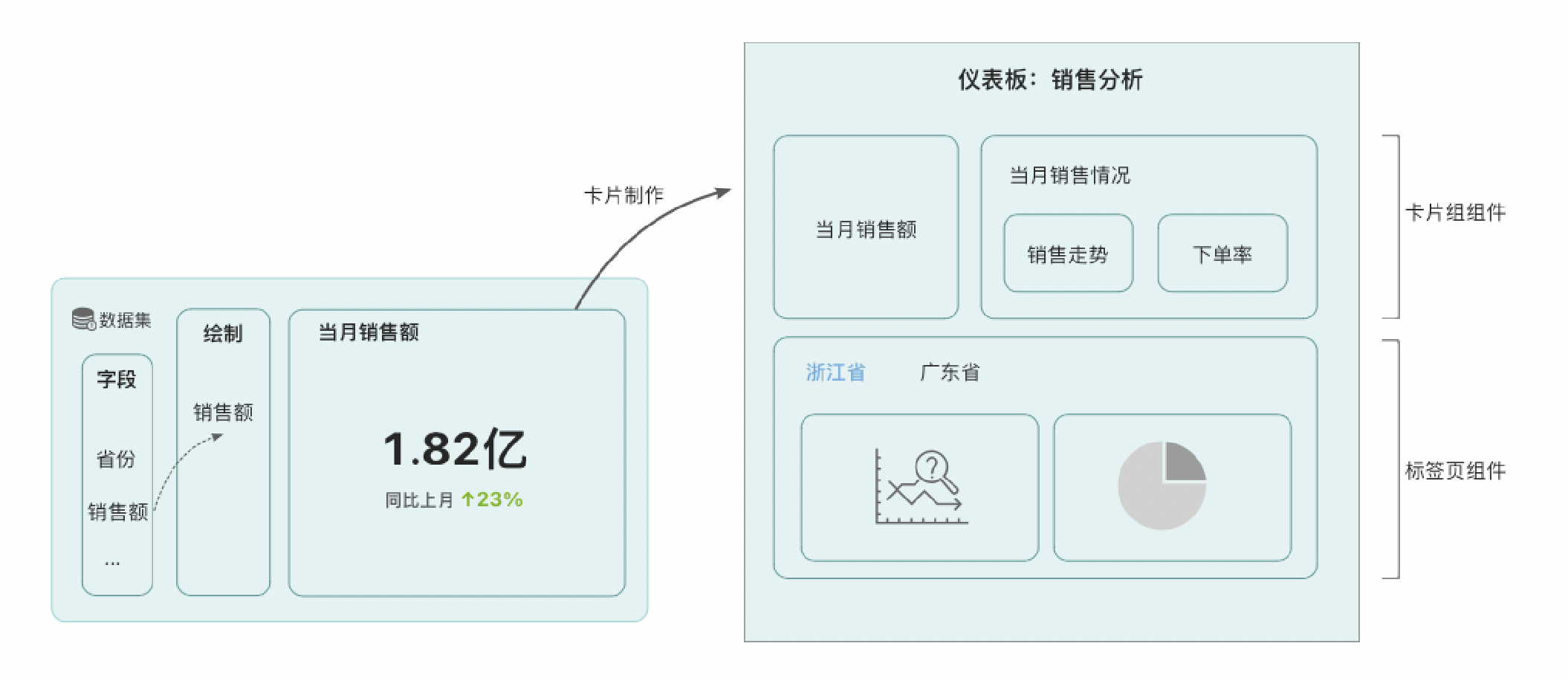
| Term | Definition |
|---|---|
| Field & Drawing | Field refers to the column name in the data table, which is one of the basic units that make up the database table, including dimension fields and numerical fields. Drawing refers to the chart creation area, where dragging fields from the data table into the drawing area automatically generates visual charts |
| Card | Cards, as constituent elements in dashboard pages, are the smallest analysis results. By dragging dimensions and values, visual data card creation and analysis can be quickly performed. Currently supports visual cards, text cards, image cards and other types |
| Tab Component | Tab component is an interface element used to switch and display different content. Different tabs can contain related cards or card groups. Users can switch to different pages by clicking tabs to view specific content under the current page |
| Card Group Component | Card group component is a container for a group of cards. Card group components can contain multiple cards under the same series, making pages more organized and improving reading efficiency |
| Dashboard | Dashboard is a collection of data visualization analysis cards, that is, analysis pages. On the page, you can customize the layout of cards such as size and position, and users can also perform operations such as copying and collecting cards |
4.3. Interactive Analysis
| Term | Definition |
|---|---|
| Drill-down | Drill-down is an analysis method that refines data analysis layer by layer by dimension granularity. Through drill-down, you can view data at different levels in the dashboard. For example: In a sales report, you can see total sales, and through "drill-down" you can further view detailed sales information, such as sales broken down by region, product type, or time |
| Linkage | Use a certain card as a conditional filter to link other cards/datasets for filtered analysis |
| Jump | Allows users to jump from the current page with conditions to the target page/or card for further analysis |
5. Analysis Applications
| Term | Definition |
|---|---|
| Self-service Data Query | Self-service data query refers to flexible report building and ad-hoc query functionality, enabling end users to build custom data reports based on templates through an interface approach, completing self-service data query and ad-hoc queries. Self-service data query can effectively help business personnel with zero development experience to easily obtain data. Facing frequently changing data requirements, one-click drag-and-drop operations can quickly and flexibly obtain data |
| Data Portal | Data Portal is a data application management function launched by Guandata BI. Through the data portal, data analysis applications can be classified and grouped according to different categories such as departments and business themes. Create an intuitive portal data viewing experience for data consumers, especially enterprise senior managers, helping enterprise senior managers quickly understand enterprise operating conditions |
| Data Screen | Data Screen refers to using corresponding systems to analyze data and provide enterprises with objective, direct data analysis results through graphical forms, helping business personnel and enterprise decision-makers to intuitively face the information behind the data, monitor enterprise data in real-time, and obtain more intuitive decision-making scenario experiences to help enterprises upgrade their digital operations |